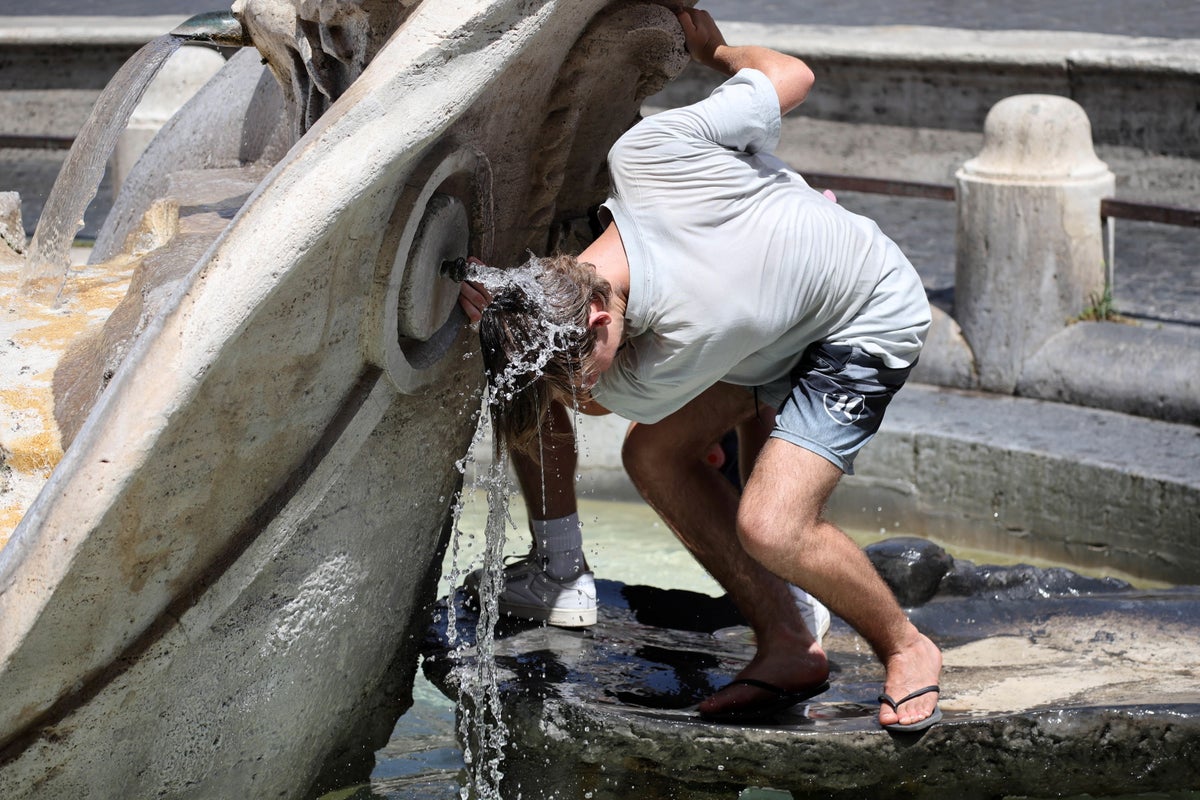
Southern Europe is bracing for scorching temperatures this week as a new anticyclone entered the region, adding to the deadly heatwave that began last week.
The new weather system, named Charon after the ferryman of the dead in Greek mythology, moved over the region on Sunday after days of sweltering heat under another high pressure weather system dubbed Cerberus.
Charon, which like Cerberus has moved northwards from north Africa, is expected to drive temperatures in Italy’s Sardinia as high as 48C, a mark that could see it approach or even break Sicily’s 48.8C record for the hottest temperature ever recorded in Europe.
The European Space Agency (ESA) says Italy, Spain, France, Germany and Poland may see extreme conditions.
The impact of the heatwave has already led to raging wildfires in Spain prompting the evacuation of over 4,000 people, Greece shutting down the ancient Acropolis during the hottest part of the day and Italy issuing hot weather red alerts for 16 cities.
Here’s what the forecasters are saying for extreme temperatures in Spain, Italy and Greece:
Italy
Italy has already seen the extreme heat turning deadly with a 44-year-old worker collapsing while painting zebra crossing lines in the town of Lodi, near Milan. He died in hospital last week.
Several tourists struggled with the heat, including an unnamed British tourist who passed out in front of the ancient Roman Colosseum on Tuesday.
Temperatures are expected to remain hot this week with large parts of Italy expected to be above 35C on Tuesday and some cities forecast to hit 40C and above.
“We need to prepare for a severe heat storm that, day after day, will blanket the whole country,” Italian weather news service Meteo.it warned on Sunday.
“In some places ancient heat records will be broken.”
Health alerts are in place across various regions in Italy, including Rome, Florence, Palermo in Sicily, and Bari in the southeast.
The hottest weather is forecast to hit Sardinia, where meteorologists say there is a chance of the mercury hitting 48C or above, and potentially recording a European record.
Rome could see 43C, smashing the previous record for the Italian capital set last summer.
Italian health minister Orazio Schillaci urged people to take care, especially elderly individuals, asking people not to visit iconic outdoor sites like the Colosseum during the extreme heat.
“Going to the Colosseum when it is 43C is not advisable, especially for an elderly person,” he told Il Messaggero newspaper on Sunday, saying people should stay indoors between 11am and 6pm.
Spain
In Spain, temperatures are expected to be above 40C and remain high throughout the night, making it challenging to find respite from the heat.
Forecasters are also warning of the risk of forest fires as blazes erupted in the La Palma region of the Canary Islands on Saturday, forcing the evacuation of more than 4,000 residents.
Last week, the ground temperature in Spain, which is different from the air temperatures recorded for weather forecasts, crossed 60C in Extremadura, Spain.
Spain’s largest cities, Madrid, Barcelona and Valencia are set to see temperatures above 35C, according to the current forecasts. But meteorologists warn the mercury can climb up to the mid-40s in some places including Zaragoza in central Spain this week.
Greece
Greece has been baking in 40C heat as authorities have already taken precautions, closing the ancient Acropolis during the hottest part of the day to protect tourists.
There are also fears in Greece of a greater risk of wildfires, especially in areas with high winds. It suffered major wildfires in 2021 in another exceptional heatwave.
Earlier on Friday a tourist was stretchered out of the Acropolis site after falling ill due to the heat, local police said. Several other tourists in Athens reportedly sought help for heat stress.
The Red Cross has been distributing water bottles and helping people feeling nauseous and dizzy in the heat.
There and in other Greek cities, working hours were changed for the public sector and many businesses to avoid the midday heat, while air-conditioned areas were opened to the public.
Authorities in affected regions are urging residents and tourists to take necessary precautions, including staying indoors during the hottest parts of the day, staying hydrated, and avoiding strenuous outdoor activities.
Heatwaves are one of the deadliest natural hazards. Last year’s summer heatwave killed 61,672 people in Europe, a recent study has found.
The extreme heat in Europe comes as various records fell globally in recent days driven by the worsening climate crisis and the El Nino phenomenon in the Pacific, which is known to drive temperatures higher.
The first week of this month saw the average temperature of Earth at its highest level on record. Heatwaves have gripped the oceans and large parts of the northern hemisphere affecting large parts of the US, driving record wildfires in Canada and intense heat in China and Japan.
This weekend, China recorded its hottest July temperature 52.2C while California’s Death Valley hit 51C on Sunday.







